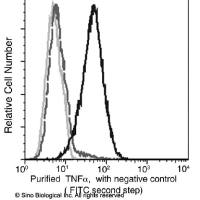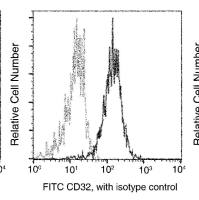Determination of class and subclass of monoclonal antibodies (MAbs) is important because several immunochemical and functional properties of antibodies depend on the isotype. Knowledge of the light-chain isotype (κ for 95% or λ for 5% of mouse antibodies) has limited practical value. In contrast, the heavy-chain isotype is very informative (
see Table 1 ); protein A or protein G binding, euglobulin properties, complement binding, kinetics of digestion with papain or pepsin, clearance from serum, valence, and avidity, all depend on isotype. Isotyping is a basis for the selection of antibody purification, conjugation, fragmentation, and storage procedures, and predicts cytotoxic properties and half-life in vivo (
see Note 1 ). In addition, isotyping is useful to control lot to lot consistency, detect contamination by another antibody, and identify hybridoma switch variants (
see Notes 2 –8 for further comment on applications).
Table 1 Isotype-Dependent Properties of Monoclonal Antibodies
|
Isotype
|
Protein A binding (8 ,9 )
|
Purification technique (10 ,11 ) a
|
Complement-mediated cytotoxicity (12 ,13 )
|
Comments
|
|
IgG1
|
Weak
|
IEC, PG
|
−/+
|
Major isotype
|
|
IgG2a
|
+
|
PA, PG, IEC
|
+
|
Major isotype
|
|
IgG2b
|
+
|
PA, PG, IEC
|
+
|
|
|
IgG3
|
+
|
EP, PA, PG
|
+
|
b
|
|
IgM
|
−
|
EP, GF
|
+
|
c
|
a EP = Euglobulin precipitation, GF = gel filtration, IEC = ion-exchange chromatography, PA = protein A affinity chromatography; and PG = protein G affinity chromatography.
b Frequent anticarbohydrate; isotype. Precipitates at low-salt concentrations (euglobulin). Stability increased at high-salt molarity.
c Frequent isotype after short immunization protocols. Precipitates at low-salt concentration (euglobulin). Stability increased at high-salt molarity.









